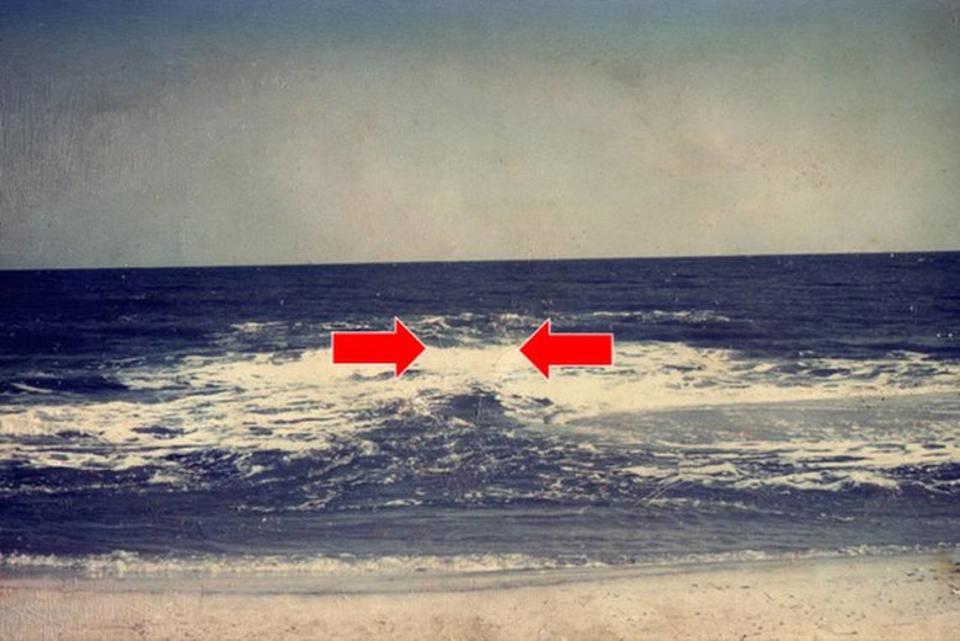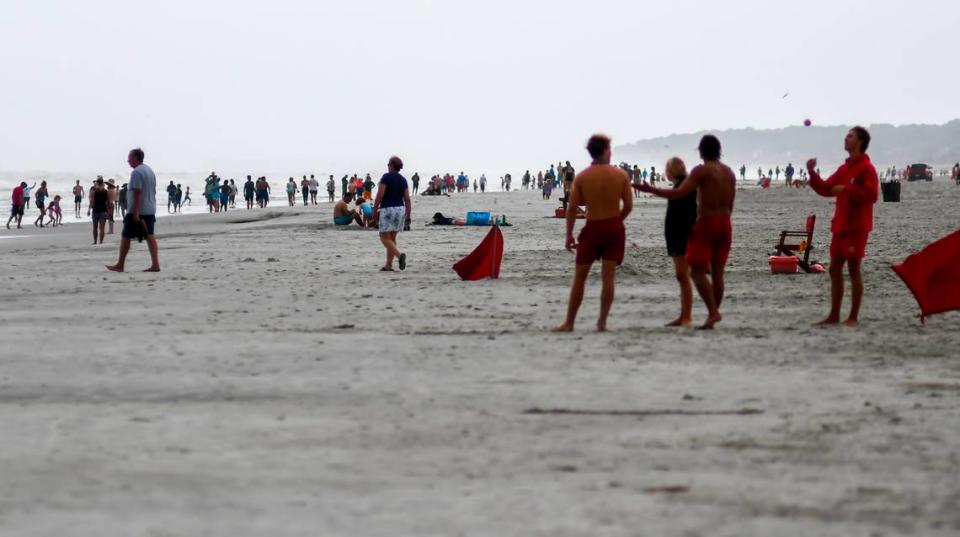Going to the beach this weekend? Here’s what you should know about wind and rip currents
Memorial Day weekend is the unofficial first day of summer, but as beachgoers flock to Coligny Beach or any other Beaufort County sandy shore, the National Weather Service warns of rip currents.
Often referred to as rip tides or undercurrents, these potentially dangerous currents often occur on the nicer days after a storm, according to National Oceanic and Atmospheric Administration.
In the United States, lifeguards rescue tens of thousands of people from rip currents every year, according to NOAA, and they estimate 100 people are killed by rip currents annually.
Another potential danger is high winds that could blow flotation devices out to shore.
“(You don’t want) little Johnny blown out away from the beach, away from the shore,” Fripp Island Sea Rescue Skipper Eric Roberts said. “It’s usually a wind issue more so than a rip ride issue at least on Fripp Island and Hunting Island and Harbor (Island).”
That means beachgoers should be on the lookout for rip currents and offshore winds Sunday and Monday as the weather clears up in Hilton Head, Beaufort, Port Royal, and Bluffton.

How to spot one
They’re usually strongest near low tide but can form at any time, according to NOAA. They typically form near sand bars close to the shore and occur at breaks or channels in the sand bar.
“They’re typically caused by cross currents across the beach,” Roberts said. “It creates a condition where the water is pushed out in a narrow channel. (The water) swoops in from both sides and rushes down the channel and that’s that’s technically a riptide.”
Often difficult to see, but you can spot them in areas where waves aren’t breaking, or where there’s foam, seaweed, or discolored water being pulled offshore.

What to do if you’re caught in a rip current
Swimmers caught in a rip current should try to swim parallel to the beach, perpendicular to the current in either direction.
“Don’t just swim straight into it (back to the beach) because you’ll lose that battle,” Roberts said.
He said its better for swimmers to use what energy they have to try to get out instead of taking riding it out into the ocean and then trying to swim back.
“That’s usually where people get in trouble is they fought and they fought and they fought and they just lost their energy and they’re pushed too far,” he said. “And that’s not a good situation. The key thing is to get out of that out rushing channel.”
What to do if the wind is blowing you out to sea
If the wind is over 10 miles per hour, “it’s not a good day to use floaty toys,” Roberts said.
Should a swimmer find themselves getting pushed out by the wind he said they should make the international symbol for distress: both arms above your head, making an “X” with your arms over and over.
Swimmers should try to make themselves as small as possible to reduce the area that the wind can pick up
“If you’re standing up on a stand up paddle board or making a high profile that will grab the wind, get flat,” he said “Lay down flat and just start paddling back to shore. Make yourself as small as possible into the wind.”
Roberts said he doesn’t recommend swimmers to leave the flotation device they have.
“It’s better to keep some flotation with you rather than ditch what flotation you have,” he said.

 Yahoo Sports
Yahoo Sports 